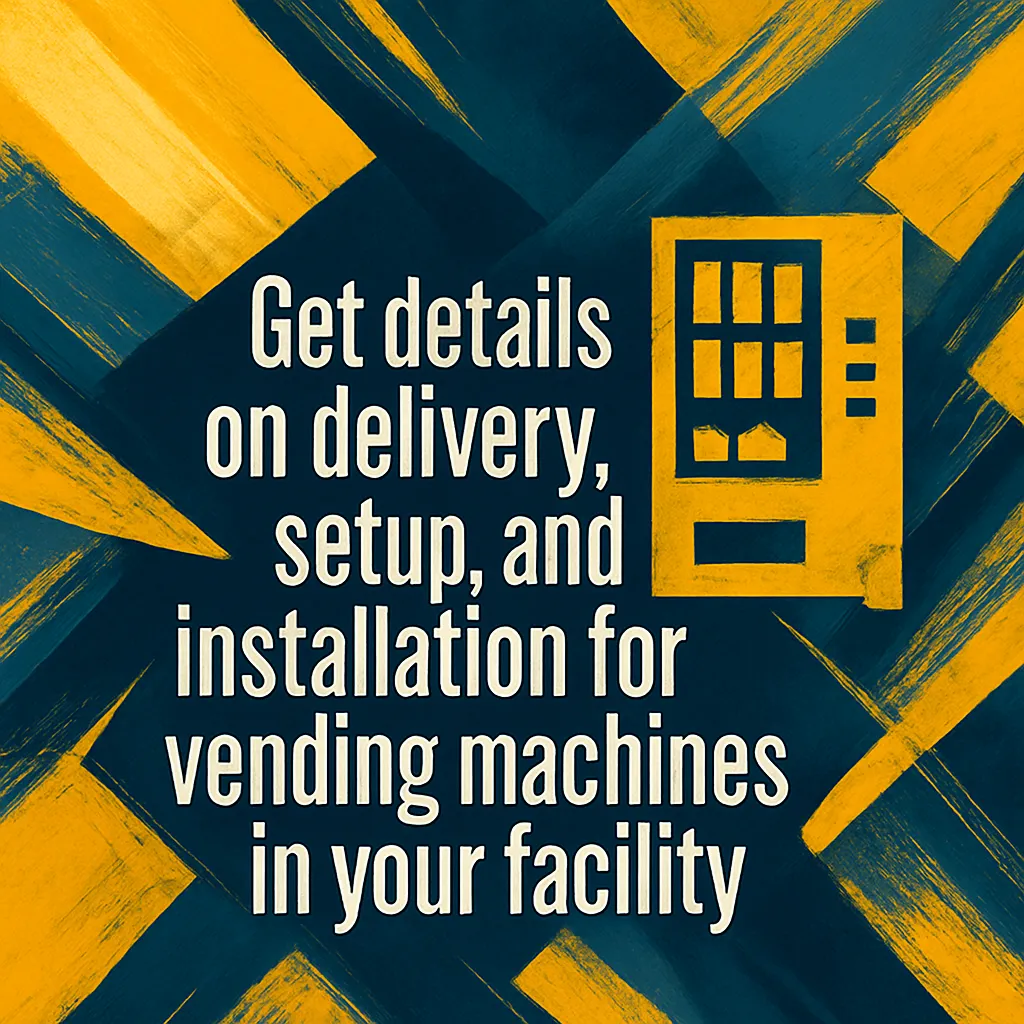How Are Vending Machines Installed?
Get details on delivery, setup, and installation for vending machines in your facility.
Back to Vending FAQs ResourcesGet details on delivery, setup, and installation for vending machines in your facility.
Back to Vending FAQs ResourcesThe installation of a vending machine is a straightforward process handled by experienced professionals, ensuring your new amenity is up and running smoothly with minimal disruption.
![]() Site survey and preparation ensure a hassle-free setup.
Site survey and preparation ensure a hassle-free setup.
![]() Professional delivery and careful placement mitigate risks.
Professional delivery and careful placement mitigate risks.
![]() Electrical hookup and stocking complete the ready-to-use installation.
Electrical hookup and stocking complete the ready-to-use installation.

Bringing a new vending machine to your business or facility might seem complex, but the process is designed to be efficient and seamless. From the initial assessment to the final product stocking, each step ensures your vending solution is perfectly integrated and ready to serve. Understanding how vendors approach installation can help you prepare your site and answer any questions you might have.
Before any equipment arrives, a thorough site assessment is crucial. This involves evaluating the proposed location for several factors: available space, proximity to required electrical outlets, and accessibility for delivery. Large machines require adequate doorways and clear pathways to their final spot. Special considerations like a water line for coffee machines or specific security requirements may also be addressed during this phase. This initial planning helps to avoid surprises and ensures a smooth installation day. You can learn more about general space considerations with our guide on vending machine size and space requirements.
Once your machine is selected and the site prepared, professional delivery teams transport the vending unit to your location. These teams are equipped with specialized tools to maneuver and precisely place the machine in its designated area. Safety is paramount during this stage, protecting both the personnel and your property. After placement, the machine is connected to power. Most machines operate on standard electrical outlets, but it’s vital to confirm specific requirements in advance to ensure dedicated circuits are available. For a deeper dive into connectivity, check out our article Do Vending Machines Need WiFi or Power?
With the machine in place and powered, the final steps involve configuring its internal systems, stocking products, and integrating payment solutions. This includes loading inventory, testing dispensing mechanisms, and setting up cashless payment readers. Many modern machines also connect to inventory management systems via Wi-Fi or cellular data, allowing for remote monitoring and efficient restocking. The goal is to ensure the machine is not just physically present, but also fully operational and ready to provide convenience to your staff or customers. Exploring resources like tools for vending businesses can provide insights into managing these aspects.
The entire installation process, including pre-planning, delivery, and setup, is handled with care and professionalism to make sure your vending experience starts off on the right foot.
The initial steps involve a site survey to assess space, electrical access, and general logistics, followed by equipment selection.
Once the machine is on-site and the location is prepared, physical installation usually takes only a few hours. The entire process from initial contact to operational machine can vary.
Most standard vending machines require a dedicated 120V, 15-20 amp grounded electrical outlet. Refrigerated or combo units might need more specific requirements.
Yes, adequate space is needed for the machine itself, plus clearance for door openings, airflow, and accessibility for service and restocking.
Typically, the vending provider handles all aspects of delivery and careful placement of the machine within your designated space.
After physical placement, the machine needs to be plugged in, tested, stocked with products, and payment systems (cash, card readers) configured and integrated.
Only certain types of machines, like coffee or ice machines, require a direct water line connection. Most snack and beverage machines do not.
Machines are typically leveled and, in some public environments, may be bolted to the floor or wall for stability and to prevent tipping.
Many modern vending machines utilize cellular or Wi-Fi connectivity for remote monitoring, inventory management, and cashless payments. This is usually set up during installation.
While full-service vending generally handles everything, the provider may offer a brief overview of basic functions if desired, though hands-on management from the location is not typically required.